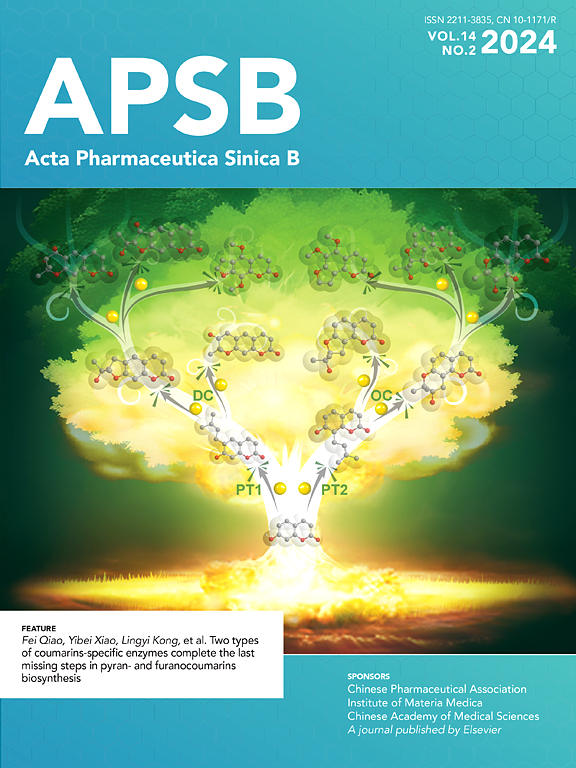Effective therapeutic targeting of tumor lineage plasticity in neuroendocrine prostate cancer by BRD4 inhibitors
IF 14.7
1区 医学
Q1 PHARMACOLOGY & PHARMACY
引用次数: 0
Abstract
Tumor lineage plasticity (LP) is an emerging hallmark of cancer progression. Through pharmacologically probing the function of epigenetic regulators in prostate cancer cells and organoids, we identified bromodomain protein BRD4 as a crucial player. Integrated ChIP-seq and RNA-seq analysis of tumors revealed, for the first time, that BRD4 directly activates hundreds of genes in the LP programs which include neurogenesis, axonogenesis, EMT and stem cells and key drivers such as POU3F2 (BRN2), ASCL1/2, NeuroD1, SOX2/9, RUNX1/2 and DLL3. Interestingly, BRD4 genome occupancy is reprogrammed by anti-AR drugs from facilitating AR function in CRPC cells to activating the LP programs and is facilitated by pioneer factor FOXA1. Significantly, we demonstrated that BRD4 inhibitor AZD5153, currently at clinical development, possesses potent activities in complete blockade of tumor growth of both de novo neuroendocrine prostate cancer (NEPC) and treatment-induced NEPC PDXs and that suppression of tumor expression of LP programs through reduction of local chromatin accessibility is the primary mechanism of action (MOA) by AZD5153. Together, our study revealed that BRD4 plays a fundamental role in direct activation of tumor LP programs and that its inhibitor AZD5153 is highly promising in effective treatment of the lethal forms of the diseases.

BRD4抑制剂对神经内分泌前列腺癌肿瘤谱系可塑性的有效靶向治疗
肿瘤谱系可塑性(LP)是癌症进展的一个新兴标志。通过药理学研究表观遗传调节因子在前列腺癌细胞和类器官中的功能,我们发现溴结构域蛋白BRD4是一个关键的参与者。结合ChIP-seq和RNA-seq对肿瘤的分析,首次揭示了BRD4直接激活LP程序中的数百个基因,包括神经发生、轴突发生、EMT和干细胞,以及POU3F2 (BRN2)、ASCL1/2、NeuroD1、SOX2/9、RUNX1/2和DLL3等关键驱动因子。有趣的是,BRD4基因组占用被抗AR药物重新编程,从促进CRPC细胞中的AR功能到激活LP程序,并由先锋因子FOXA1促进。值得注意的是,我们证明了BRD4抑制剂AZD5153,目前处于临床开发阶段,具有完全阻断新生神经内分泌前列腺癌(NEPC)和治疗诱导的NEPC PDXs肿瘤生长的有效活性,并且通过降低局部染色质可及性来抑制肿瘤LP程序的表达是AZD5153的主要作用机制(MOA)。总之,我们的研究揭示了BRD4在肿瘤LP程序的直接激活中起着基础作用,其抑制剂AZD5153在有效治疗致命形式的疾病方面非常有希望。
本文章由计算机程序翻译,如有差异,请以英文原文为准。
求助全文
约1分钟内获得全文
求助全文
来源期刊

Acta Pharmaceutica Sinica. B
Pharmacology, Toxicology and Pharmaceutics-General Pharmacology, Toxicology and Pharmaceutics
CiteScore
22.40
自引率
5.50%
发文量
1051
审稿时长
19 weeks
期刊介绍:
The Journal of the Institute of Materia Medica, Chinese Academy of Medical Sciences, and the Chinese Pharmaceutical Association oversees the peer review process for Acta Pharmaceutica Sinica. B (APSB).
Published monthly in English, APSB is dedicated to disseminating significant original research articles, rapid communications, and high-quality reviews that highlight recent advances across various pharmaceutical sciences domains. These encompass pharmacology, pharmaceutics, medicinal chemistry, natural products, pharmacognosy, pharmaceutical analysis, and pharmacokinetics.
A part of the Acta Pharmaceutica Sinica series, established in 1953 and indexed in prominent databases like Chemical Abstracts, Index Medicus, SciFinder Scholar, Biological Abstracts, International Pharmaceutical Abstracts, Cambridge Scientific Abstracts, and Current Bibliography on Science and Technology, APSB is sponsored by the Institute of Materia Medica, Chinese Academy of Medical Sciences, and the Chinese Pharmaceutical Association. Its production and hosting are facilitated by Elsevier B.V. This collaborative effort ensures APSB's commitment to delivering valuable contributions to the pharmaceutical sciences community.
 求助内容:
求助内容: 应助结果提醒方式:
应助结果提醒方式:


